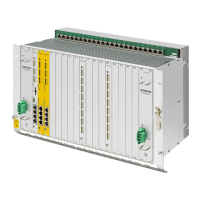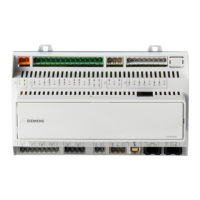Detailed description
2.3 Continuous -path mode
Basic logic functions: Continuouspath Mode, Exact Stop, LookAhead (B1)
Function Manual, 11/2006, 6FC5397-0BP10-2BA0
41
2. Observe the positioning behavior of each path axis at different traversing velocities.
When doing so, set the jerk such that the desired positioning tolerance is maintained.
Note
The higher the traversing velocity from which the positioning process is started, the
higher in general the jerk can be set.
3. Use the maximum permissible jerk determined for the least critical traversing velocity:
MD32431 $MA_MAX_AX_JERK (maximum jerk)
4. Determine the F
APD
factor for all of the path axes using:
F
APD
= (largest determined jerk) / (smallest determined jerk)
Note
The smallest determined jerk is the value for the jerk during the most critical traversing
velocity.
5. Enter the largest F
APD
factor that was determined via all the path axes as the value for the
dynamic response adaptation:
MD20465 $MC_ADAPT_PATH_DYNAMIC[ 1 ] = F
APD
2.3.7 Technology G group
Dynamic response settings for technology G groups
Different settings can be stored and programmed for five different machining sections, e.g.
tapping, roughing, smoothing, and smooth-finishing. For example, roughing can be
performed optimized for time and smoothing, optimized for surface.
After RESET, the basic setting technology G group can be set with the machine data:
MD20150 $MC_GCODE_RESET_VALUES (RESET position of G groups)
Only the dynamic response of the path axes is determined when the technology group G
code is activated. This has no effect on:
• Positioning axes
• PLC axes
• Command axes
• Movements based on axis coupling
• Overlaid movements with handwheel
• JOG movements
• Reference point approach (G74)
• Fixed point travel (G75)
• Rapid traverse movements (G0)
The dynamic response for these axis movements is still derived from the machine data of the
DYNNORM default setting.

